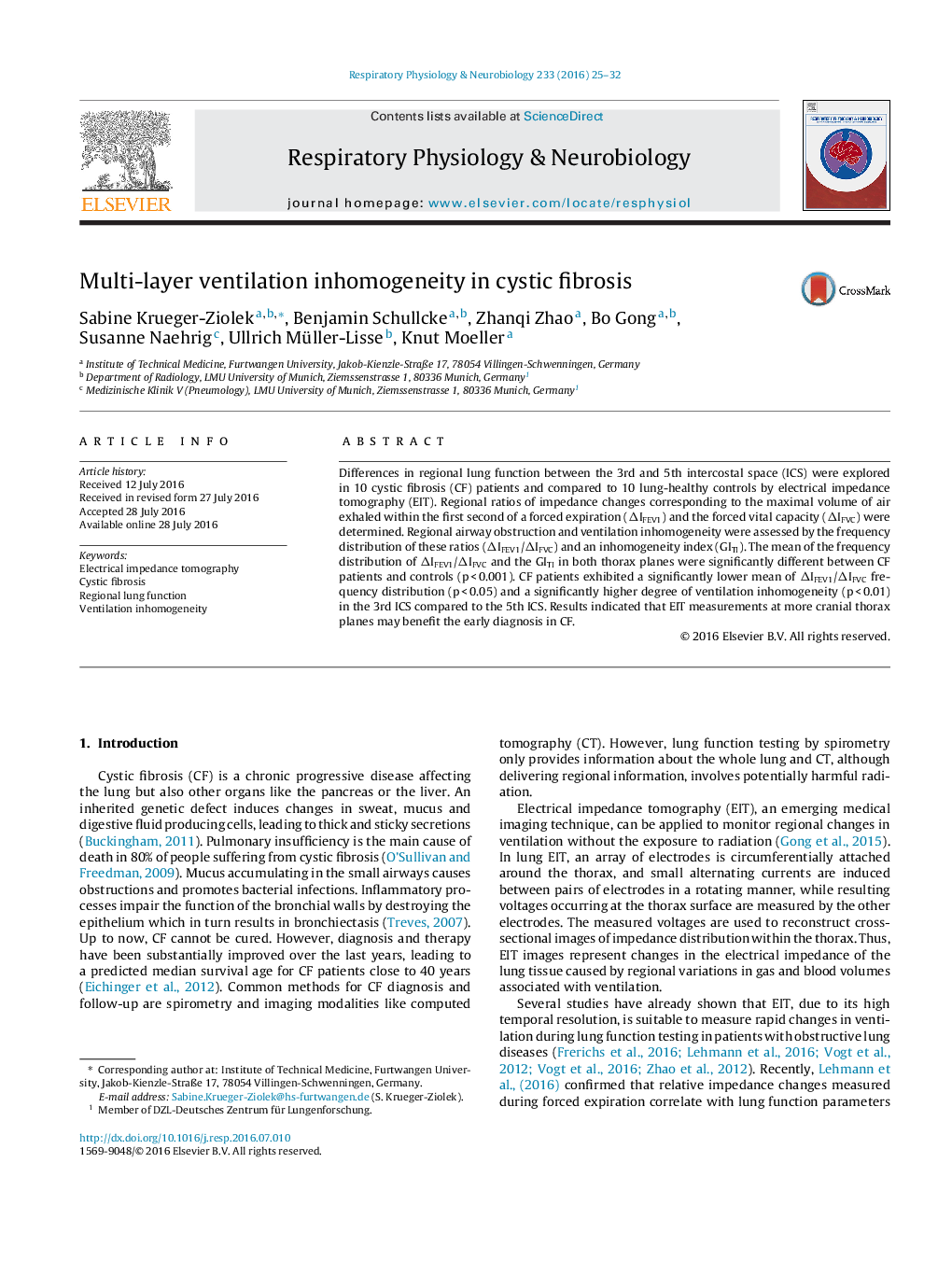| Article ID | Journal | Published Year | Pages | File Type |
|---|---|---|---|---|
| 2846621 | Respiratory Physiology & Neurobiology | 2016 | 8 Pages |
•Ventilation inhomogeneity determined by Electrical Impedance Tomography (EIT).•Differences in ventilation inhomogeneity between CF patients and healthy controls.•Ventilation inhomogeneity differs in cranio-caudal direction in CF.•Cranial lung regions are more affected by airway obstruction than caudal regions.•EIT may improve diagnostic accuracy in CF-related lung disease.
Differences in regional lung function between the 3rd and 5th intercostal space (ICS) were explored in 10 cystic fibrosis (CF) patients and compared to 10 lung-healthy controls by electrical impedance tomography (EIT). Regional ratios of impedance changes corresponding to the maximal volume of air exhaled within the first second of a forced expiration (ΔIFEV1) and the forced vital capacity (ΔIFVC) were determined. Regional airway obstruction and ventilation inhomogeneity were assessed by the frequency distribution of these ratios (ΔIFEV1/ΔIFVC) and an inhomogeneity index (GITI). The mean of the frequency distribution of ΔIFEV1/ΔIFVC and the GITI in both thorax planes were significantly different between CF patients and controls (p < 0.001). CF patients exhibited a significantly lower mean of ΔIFEV1/ΔIFVC frequency distribution (p < 0.05) and a significantly higher degree of ventilation inhomogeneity (p < 0.01) in the 3rd ICS compared to the 5th ICS. Results indicated that EIT measurements at more cranial thorax planes may benefit the early diagnosis in CF.
